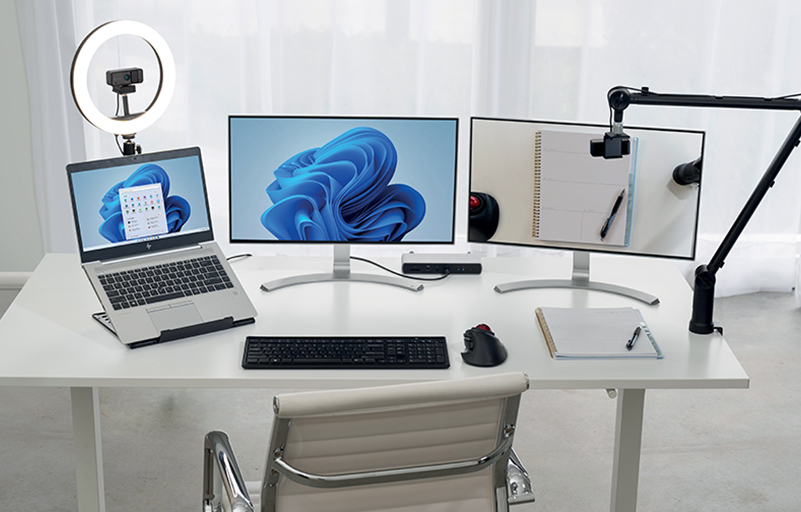
Ergonomic risk has been a growing concern in the workplace for a number of years. With employees spending hours at a time at their station, assessing the risks that surround such stationary work is essential – for both reasons of legality and wellbeing. Therefore, not only should IT managers ask themselves about the ergonomic safety of their staff, but they should also be teaching staff how to recognize the risks themselves.
Ultimately, educating staff members to conduct their own ergonomic risk assessment boils down to the following eight questions:
- When sitting down at your desk, are your hips at a 90-120 degree angle and feet flat on the floor?
- Can the height and angle of your monitor, keyboard and chair be adjusted?
- Is it practical for you to stand periodically while continuing to work?
- Is the top of your monitor or laptop screen at the same level as your eyes?
- Is your screen a minimum of 50 cm away from your eyes?
- Are your wrists able to remain flat when you are typing?
- Are your shoulders relaxed, with upper arms parallel with your torso?
- Are your most used items all available within easy reach?
Many managers will be able to answer these questions themselves simply by looking at staff members; if they appear hunched over their desks or leaning into their computer screens, it is clear that their desk, chair and monitor are not properly positioned. However, many employees may not even realize themselves that they are sitting incorrectly and in asking them this series of questions and encouraging them to continuously assess their own comfort levels, you can help them to better understand the ergonomic strains they may be putting on themselves.
Once staff have an understanding of how their workspace should be set up to minimize ergonomic risk, it is the manager's responsibility to ensure that employees have the appropriate accessories available to adapt their workspace. Managers can assess whether employees are properly equipped by asking themselves the following questions:
Do employees have the opportunity to work standing up?
Some job positions may require workers to regularly stand and move around as part of their daily tasks, but others, such as programmers or web developers, may perform the vast majority of work at their PC and therefore sat down. If this is the case, you may have to find ways for them to stand up and stretch their backs and necks regularly; perhaps daily meetings could be performed standing up, or employees could be provided with sit/stand desks so that they have the option to work at a PC standing and sitting throughout the day.
Can laptops or monitors be raised?
As mentioned earlier, computer screens should be positioned so that the top of the screen is at eye level; this is to avoid craning the neck or hunching the shoulders. This can be particularly difficult for employees using laptops, so make it easy for them to suitably raise their screens up. In many offices, a stack of printer paper or a couple of large, heavy books can do the trick, but you should consider laptop and monitor stands to keep desks sturdy - and looking more professional.
Are chairs adequately adjustable?
To give employees maximum control over their sitting comfort, you should provide desk chairs with adjustable armrests, back and seat height. This will allow them to achieve the proper hip and leg alignments described above and keep their shoulders relaxed.
Can employees support their wrists when typing?
If wrists don't remain flat when typing, employees could risk strains and RSI, so they should be provided with adequate support. Since they're specially designed to minimize strain on the wrists when typing, ergonomic keyboards make a great addition to each workspace. However, if this isn't an option due to budget restraints, you could provide wrist pads instead which can either support the wrists when typing, or provide relief when taking breaks from typing.
Is extra storage available for better desk organization?
To prevent employees from bending, twisting or stretching too far to grab their most used items. This may mean that you have to provide better storage solutions such as drawer units or sorting trays.
Are there appropriate footrests available?
When feet are unable to rest flat on the floor, the hips and lower back are put under pressure. We discussed the benefit of adjustable chairs earlier, but even with these it sometimes it simply isn't possible for feet to reach the floor whilst the arms remain at a suitable position for typing. If this is the case, employees should be provided with suitable footrests.
Is ergonomics a priority for your business? We have all budgets covered by our wide range of ergonomic accessories.
